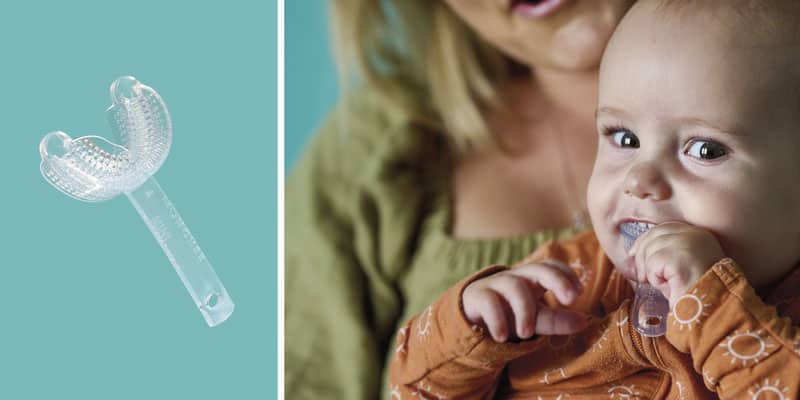Introduction to Myo Munchee appliances
Myo Munchee encourages active and healthy development of facial muscle strength and nasal breathing.

Why Munchee?
Primitive cultures chewed on meat, tough gristle, nuts, seeds, bones, and raw vegetables — which was good exercise for the jaws and stimulated bone growth. Sadly, the modern processed diet requires little chewing effort.
Using a Myo Munchee promotes healthy development of facial muscle strength and encourages nasal breathing.
The original premise for the development of the Munchee was for gum health and oral hygiene — when it is chewed actively, there will be an increase in salivary flow, improved hygiene, as well as aerobics for the muscles of the jaw and face and improved periodontal blood flow. Over time, it became clear that there were many more benefits to be had from chewing a Munchee.
The benefits of chewing are far reaching, and more are being discovered all the time.
What we do know is:
- Chewing is involved in regulation and maintenance of bone growth.
- Chewing is the essential movement for optimal upper airway function to develop strength of the muscles involved in the complex process of swallowing.
- Chewing assists with eustachian tube and sinus drainage.
- Chewing develops the strength of muscles to ensure strength and stability of the TM joints.
- Chewing can reduce stress and is known to be neuro-calmative.
- Chewing contributes to better cognition.
- Chewing allows for the breakdown and absorption of foods more efficiently.
What is a Munchee?
The Myo Munchee is made from flexible silicone giving it considerable elasticity. With its unique shape and many small prongs, it allows the jaws to comfortably rest in a Class 1 occlusal relationship.
Munchee benefits:
- oral hygiene
- myofunctional therapy tool
- myofunctional orthodontics
- pacifier replacement
- teething tool
- neuro-sensory tool
- special needs tool
Why we need to start early
We can have the greatest impact with the most ease — therefore early identification is essential. Malocclusions can be predicted from as young as 6 months and do not self-correct if left untreated. Malocclusions are often the root cause for many issues:
- speech and feeding
- dribbling and drooling
- ear infections
- mouth breathing and sleep disturbance
- postural instability and weakness
Myo Munchee Bebe + Mini
Babies can start using Myo Munchee Bebe anywhere from 5-8 months of age, depending on where the child is developmentally. When babies are bringing chew toys and hands to their mouth, they will be able to start engaging with the Bebe. Bebe creates awareness of the whole stomatognathic system. Over 1/3 of all sensory motor awareness is from the lower third of the face — lips/tongue and jaws. Bebe is suitable for children ages 5 months to 2 years old, and children over 2 years will be suited to the Myo Munchee Mini.
Conditions for use:
- oral hygiene
- low oral tone
- mouth breathing
- pacifier replacement
- teething
- dribbling/drooling
- fussy eater
- delayed speech
Pacifier replacement
At the age of 6 months, the oral reflexes that have assisted with the breastfeeding and breathing mechanisms should be diminishing, and the chewing reflexes need to be activated and integrated. The Bebe is a great replacement to allow the age-appropriate activity of chewing to become more active rather than staying with sucking, which is the early mechanism for feeding.
The Mini is a fantastic tool to transition toddlers away from the pacifier and can be promoted to them as “the big kid’s paci.” Visit https://drive.google.com/file/d/1DsxRSYBciXNYaHstm-d9yQhvaQE9FXhI/view?pli=1 for more information about the impacts of pacifiers.
Myo Munchees are available in sizes suitable for ages ranging from 6 months to adults.
This information was provided by Myo Munchee.
When thinking about Myo Munchee, it can be helpful to understand myofunctional therapy and how it contributes to aspects such as tongue position and nasal breathing. Read this article in our sister publication, Orthodontic Practice US. https://orthopracticeus.com/working-together-to-increase-retention-through-identification-and-treatment-of-postural-abnormalitie/
